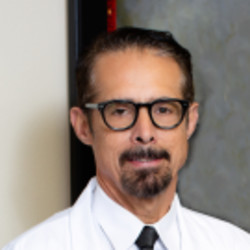In the rigid world of modern medicine, where efficiency metrics and patient throughput reign supreme, the idea of “protected time” for physicians may sound indulgent, even naive. After all, who can afford to remove a highly trained, revenue-generating physician from clinical duties to pursue passion projects? But perhaps the better question is — can we afford not to?
Physicians enter medicine with a profound sense of purpose. Yet somewhere between pre-rounding and charting into the late evening, that sense of purpose can become eroded by burnout, bureaucratic overload, and the relentless pressure to produce. According to a 2023 Medscape report, over half of physicians report feeling burned out, and many cite lack of autonomy and meaningful work as key contributors. Protected time — a formalized, structured period in a physician’s schedule to pursue clinical or nonclinical interests — might just be the intervention we need to restore meaning, rekindle innovation, and retain talent.
Let’s be clear: This is not a plea for less work. It’s a call for better work. I am advocating for health systems to intentionally carve out time — perhaps just a half-day a week or a few hours a month — for physicians to focus on pursuits that align with their personal passions and professional goals. These pursuits could range from research, quality improvement projects, and curriculum development to community health initiatives or creative endeavors like writing and design that indirectly enhance the health care environment.
Of course, implementing this model at scale would come with real costs. Reduced clinical productivity, potential decreases in patient access, and the logistical challenge of backfilling coverage are not insignificant concerns. But the solution doesn’t lie in unstructured time off — it lies in structured, accountable protected time. Think of it as an “independent study” for physicians: time that is protected from clinical obligations, but not exempt from oversight or outcomes.
Under this model, physicians who apply for protected time would be required to outline a proposal, set clear goals, and submit deliverables by designated deadlines. Whether it’s a new patient education tool, a streamlined discharge protocol, or a wellness curriculum for residents, the output would be tangible and, ideally, beneficial to the institution. Importantly, these projects would be reviewed and mentored by a designated supervisor or committee — ensuring that the time is not only protected but also productive and aligned with institutional priorities.
This system introduces a fundamental shift in how we view physician value. Rather than measuring worth exclusively by RVUs or patient volume, it rewards creativity, initiative, and long-term thinking. It’s an investment — not just in physicians, but in the future of health care delivery itself. And it’s already happening, albeit in pockets.
Academic medical centers have long offered protected time for research and teaching, though often with wide variability and limited reach beyond senior faculty. A structured, scalable model could democratize this opportunity and extend it to community hospitals, integrated health systems, and outpatient networks. Some progressive institutions have begun pilot programs that grant protected time for innovation and quality initiatives, yielding improvements in patient safety, operational efficiency, and even physician satisfaction.
Still, skeptics will rightly point out that not every physician has a passion project in the queue, nor should everyone be expected to. This is where the concept of “opt-in” protected time becomes critical. It’s not about mandating side projects for all — it’s about enabling and supporting those who are motivated to contribute in ways beyond the exam room. Those who thrive on clinical care can and should continue focusing on their patients full-time. But for those who feel stifled, sidelined, or stagnated, protected time offers a structured way back into engagement and purpose.
There’s also the issue of fairness. How do we ensure that protected time doesn’t become a perk for the well-connected few? Transparency is key. Institutions would need to build an equitable application process, include a diversity of reviewers, and provide feedback regardless of whether a proposal is approved. Over time, data could be collected to evaluate the outcomes of protected time initiatives — patient satisfaction, clinician retention, financial return on innovation — making the case for expansion or refinement.
The bigger picture here is not just about physician satisfaction — it’s about the health of the entire system. A burnt-out doctor is more likely to make mistakes, less likely to stay in practice, and less capable of forming the human connections that define quality care. Conversely, an engaged physician — one who feels seen, valued, and supported — is a powerful force for change.
By creating space for reflection, curiosity, and growth, we not only honor the full humanity of our physicians — we also open the door to a more resilient, innovative, and adaptive system. One where physicians are not just cogs in a machine, but active architects of the care they deliver.
This won’t happen overnight. It will require courageous leadership, thoughtful policy, and a willingness to challenge longstanding norms about what constitutes “productivity” in medicine. But if we are serious about solving the physician burnout crisis, about fostering innovation, and about improving care for our patients, then protected time shouldn’t be a luxury. It should be a standard.
It’s time to reimagine what a physician’s workweek can look like — not just for our sake, but for the future of health care itself.
If your institution offered protected time, how would you use it? Share in the comments.
Dr. Neal Kaushal serves as division chief of gastroenterology, Integris Health, Oklahoma. He also has a specialty in business operations and is passionate about the intersection of business and medicine to support patient access to care. He enjoys playing ball and going on walks with his three Dobermans, Rani, Riya, and Rishi. Dr. Kaushal was a 2024–2025 Doximity Op-Med Fellow.
Image by Feodora Chiosea / Getty Images







